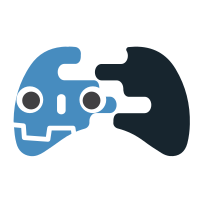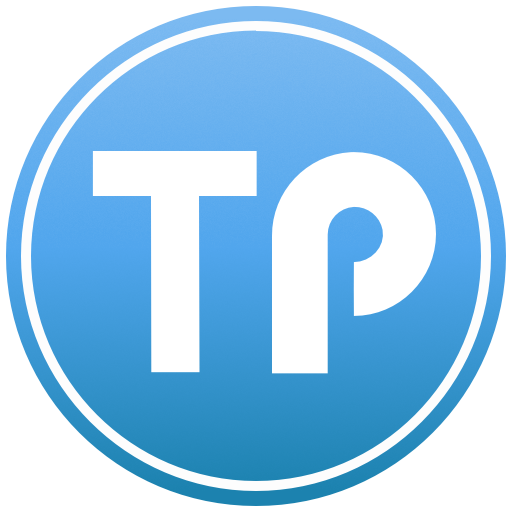A Bowyer-Watson algorithm implementation for Delaunay triangulation for Godot. Also generates Voronoi diagram from triangulation, including neightbour cells scanning. Written as a single GDScript file.
Plugins
 4.0v1.3.02D ToolsBy: bartek97
4.0v1.3.02D ToolsBy: bartek97 3.4v1.0Tools
3.4v1.0ToolsThis plugin import CSV/TSV files as Array or Dictionaries. This allows you to access CSV data using `preload("res://example.csv").records`.
By: timothyqiu 4.0Loggie74v2.0Tools
4.0Loggie74v2.0Tools• [Github]: https://github.com/Shiva-Shadowsong/loggie Now with new user guides and extended features! • [Discord]: https://discord.gg/XPdxpMqmcs Support, feature requests and development discussion. Loggie is a Godot logger and string composer for those who need improvements and more control over how console and logfile output is styled and handled. Highlighted Features: * Easy message composition and customizability. * Use styled logs during development. * Automatic clean unstyled logs in release / production builds. * Timestamps * Domains (message categories) * Channels (Terminal, Discord, Slack) * See all on GitHub... If you need something simple but effective, Loggie is your guy.
By: ShivaShadowsong 4.0
4.0 4.0v2.0Tools
4.0v2.0ToolsThis plugin import CSV/TSV files as Array or Dictionaries. This allows you to access CSV data using `preload("res://example.csv").records`.
By: timothyqiu 3.2v0.2.0Scripts
3.2v0.2.0ScriptsThis plugin adds Agones SDK functionality to GDScript. With this plugin you can call Agones SDK functions using GDScript to create your dedicated server powered by Agones and Godot Engine.
By: AndreMicheletti 3.4v0.15.1Tools
3.4v0.15.1ToolsColyseus SDK for Godot. Documentation: https://github.com/gsioteam/godot-colyseus#documentation Try the online mode of this demo: https://gsioteam.github.io/ActionGame/
By: gsioteam 4.2v0.10Tools
4.2v0.10ToolsGet your multiplayer game up and running quickly with our easy-to-integrate plugin. Key Features: - Interactive Lobbies & Matchmaking: Enable players to easily find and join each other from across the globe. - Account System: Allow players to easily create accounts. Comes with built-in email verification and a moderation system. - Persistent Data Storage: Create databases to store and retrieve data from the cloud. - Global Servers: Deliver high uptime and seamless gameplay through our extensive global server infrastructure. - In-Depth Analytics: Gain valuable insights with detailed tracking of player statistics. - Godot Asset Library Integration: Set up GD-Sync with minimal hassle, right from within the engine. More information can be found on https://www.gd-sync.com.
By: GD-Sync 3.1v1.0Tools
3.1v1.0ToolsSimple plugin that makes dialog creation easier. More info in the repo.
By: ejnij 3.3v1.0.0Scripts
3.3v1.0.0ScriptsProvides a radial popup menu ("a pie menu") node.
By: Jesuisse 4.2v1.02D Tools
4.2v1.02D ToolsGodot 4 addon to add better joystick and dpad support to sliders. - Smooth joystick - Discrete joystick - Smooth & discrete - Custom Dpad increment
By: mreliptik 4.3v1.12D Tools
4.3v1.12D ToolsProvides a radial menu control node for Godot Engine 4.3 (aka a "pie menu") with support for submenus. It supports keyboard, mouse and gamepad input. The look of the control is highly configurable using exported properties and themes. There is a live demo at https://www.phar.ch/2024/godot-radial-menu-demo/RadialMenu.html
By: Jesuisse 3.2v1.0.0Tools
3.2v1.0.0ToolsInspector gadget is a set of GDScript UI controls designed to read and write object properties at runtime. It extends the standard get_indexed() function from the Node class with support for arrays and dictionaries, allowing for fully-recursive property visualization and editing using NodePath subnames.
By: Shifty 3.2v1.3Shaders
3.2v1.3ShadersThis plugin gives you the ability to have lens flare in your 3d projects. And it's procedural too; meaning you don't need to assign actual lens flare textures as long as you have a bright spot in your screen. Just install the addons folder to add it to your project. Find out more here: https://github.com/SIsilicon/Godot-Lens-Flare-Plugin
By: SIsilicon 3.5v1.4Tools
3.5v1.4ToolsCreate a blueprint in Godot Engine to organize levels/rooms of a game and their interconnections. Useful for metroidvanias, non-linear games or any game with a lot of levels.
By: dannygaray60 4.3v1.0Scripts
4.3v1.0ScriptsThis Screen Effects addon is created specifically for 3D projects. It includes a variety of full-screen effects, supports multiple instances for each effect, and features a smooth fade system for seamless transitions. An example project is included to help you get up and running quickly. Features: - Radial Blur - Screen Blur - FOV Shake - FOV Fade - Screen Shake - Fade from/to Color - Motion Blur - Multiple Instances: Multiple instances of each effect can be added and controlled individually. - Effect Management: Built-in system to handle the fade-in, fade-out, and duration of each effect. - Example Project: Includes a sample project demonstrating the usage of the addon.
By: ioannis 3.0v1.0.52D Tools
3.0v1.0.52D ToolsImport sprite sheets from TexturePacker as a set of AtlasTextures or a TileSet. Sprite sheets reduce the memory usage of your game by placing many small image objects in one big image. This also increases the game performance because less texture swapping is required during the render process of your game scene. For Godot 3.0
By: CodeAndWeb 3.5v3.5.02D Tools
3.5v3.5.02D ToolsImport sprite sheets from TexturePacker as a set of AtlasTextures or a TileSet. Sprite sheets reduce the memory usage of your game by placing many small image objects in one big image. This also increases the game performance because less texture swapping is required during the render process of your game scene. For Godot 3.5
By: CodeAndWeb